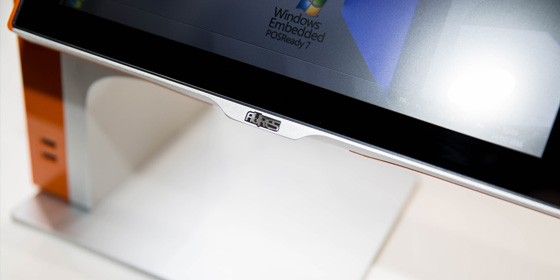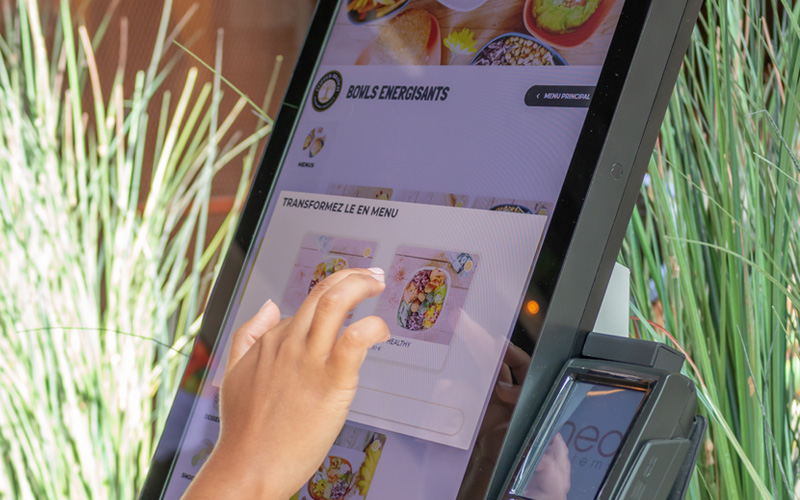In-store KIOSK Self-Service Solutions improve the Customer Experience: AURES explains how
By François LEPIVERT – KIOSK Business Development Director – AURES Group
The emergence of multi-function and self-check-out KIOSK solutions has enabled retailers and outlets to significantly enhance the customer experience on the point of sale.
This is especially true as shoppers have now become familiar with most of the new KIOSK technologies that are becoming more and more widespread.
Integrating kiosks into the sales process and the customer journey has become an asset; almost 70% of buyers believe that the messages and information they receive within the shop or the shopping centre (via screens, kiosks – whether images and text, videos, audio messages) influence their buying behaviour and sway their decision on site.
Moreover, thanks to new omni-channel technologies, the average customer is becoming more and more autonomous and independent, although employees still play an important role in optimising and smoothing the customer journey.
In many cases, these employees act as ‘facilitators’: they inform, guide and reassure the customer while helping them to solve any problems or issues they may encounter.
The role of employees has not become less important than it was in the past: their mission has simply evolved towards more advice and service, both upstream and downstream of the sales process, which makes it possible to upgrade the content of certain jobs (reception staff, cash desk clerks…)
Some retailers have anticipated and prepared for this market evolution, developing strategies that focus on the omni-channel customer journey and meeting the expectations of consumers, who are often looking for new in-store experiences when they choose to visit a physical store.
These retailers have also realised that the deployment of KIOSK self-check-out solutions in their points of sale will help to improve, modernise and even rejuvenate their brand image and identity while bolstering store reputation.
More autonomy and time savings
At the sight of long lines, any shopper generally understands that he – or she – will have to wait and waste time, which will trigger dissatisfaction; indeed, when he wants to shop in-store, the speed and efficiency of the services offered will be a priority.
Kiosks are increasingly designed to be more compact, with a small footprint (like AURES’ KOMET or KRYSTAL), in order not to obstruct the sales area or the field of vision; distributed in several places on the sales surface, they provide additional checkout and major information points.
Kiosks empower customers to initiate item pick-ups or check-out during high traffic periods, avoiding flocking at the traditional desks and registers, which means lost of time – particularly during these busy periods.
The fact that customers are increasingly comfortable with touch screens and new technologies makes it quicker and easier for them to move from one kiosk to another, reducing lines and queues and making the customer experience more fluid; this has an attractive effect on potential buyers, who are no longer put off by the idea of going to the store for fear of losing time.
Instead of having to go from one part of the shop to another to find an available (or competent) employee or salesperson to check the availability of an item, a size of garment, or a price, the customer is now autonomous and does not have to wait for the person who could help him or her, who is often busy with other tasks, to come and assist.
The reduction of waiting times and queues is therefore a strong argument to enhance the customer in-store experience; satisfied clients make more repeat visits, which contribute to improve the sales’ level of the point of sale.
Customisation and tailoring
There is no better way to create a positive customer experience than a personalised shopping experience. KIOSK solutions allow for multiple applications that are often relatively easy to use; traditional business approaches – where a single standard offer was sufficient some time ago – are no longer in vogue and no more a viable business model for retailers.
The modularity and customised formats offered by multi-function kiosks offer significant advantages that allow them to be integrated into all retail spaces: variable kiosk heights, portrait or landscape screens, single or double-sided kiosks, countertop or free-standing equipment, all are possible and can be adapted.
Moreover, with their associated or embedded peripherals such as connected payment terminals, barcode scanners, keyboards or additional screens, interactive kiosks can now be used everywhere and by everyone.
Kiosk designers and manufacturers such as AURES Technologies also ensure that their KIOSK equipment complies with current standards, particularly with regard to people with reduced mobility (PRM).
Optimising staff tasks and increasing efficiency in the shop
Retailers are focusing on recruiting dedicated, committed, reliable and fast-acting employees. What seems obvious can sometimes be difficult to achieve and one of the biggest challenges in retail today is the selection and recruitment of staff; this is why many retailers are increasingly relying on kiosks to supplement and optimise the skills and role of local staff.
Retailers who choose to rationalise and automate their points of sale with kiosks often take the opportunity to reorganise their sales force and redefine the role of their in-store staff (more sales support, advice and service – more added value for customers).
Advertising and promotion
The versatility and modularity of KIOSK solutions allow for many applications and services beyond providing information and facilitating checkout. They can help generate additional revenue by combining promotions, advertising content – and by allowing consumers to discover many offers that they would not be able to see on their own or at first glance in the store.
Advertising on kiosks can be for specific items, services or even other companies and/or brands (joint advertising). Retailers can also integrate their customer loyalty programmes, promotions, competitions, etc.
By capitalising on artificial intelligence (AI), an equipment that looks “static” and traditional (piece of hardware) will be able to occupy a prominent place in a retailer’s strategy.
By using AI in their kiosks, retailers will be able to decide whether to trigger up-sells and cross-sells or tactical up-sells; these are now at the heart of the omni-channel sales strategy of many modern and proactive retailers.
Finally, the use of in-store videos offers advertisers a fantastic way to promote items and services through strong combinations of images and slogans, quickly attracting and capturing the attention of visitors and customers.
When applied to kiosks, video can generate additional sales through upselling and cross-selling, allowing the original kiosk investment to be quickly recouped.
Conclusion
KIOSK solutions have become an essential part of a retailer’s strategy to generate new revenue and increase margins. They also contribute to the store’s brand image and identity, providing a positive and modern customer journey and experience.
Today, the quality of the customer journey – more than anything else – will make the difference for the customer who decides to visit a store. It is essentially on the added value of this experience that the “in-store” competition between retailers and their brands will be played out in the future.




